Two years later, after significant difficulty and now highly modified from its original conception, the building launches with a preview on May 7 ahead of it being handed over permanently to the city. This story is now a symbol of the management of the region's reconstruction overall, and is the subject of the first episode of the work of graphic journalism published by Vincent Filosa in the number of Domus 947 (May 2011), as well as the second part of this interview.
The story of L'Aquila has new relevance to Ban's native Japan, which was itself battered by the earthquake and tsunami of March 11 this year, urging us to investigate how emergencies of this scale will be handled in the future in other countries.
The presence of Shigeru Ban, Milan (an elegant structure made of cardboard tubes for Hermès at the Salone del Mobile 2011) was also an occasion to ask him about the network of volunteer architects (VAN: Voluntary Architects Network) which he founded following the earthquake in Kobe in 1995.
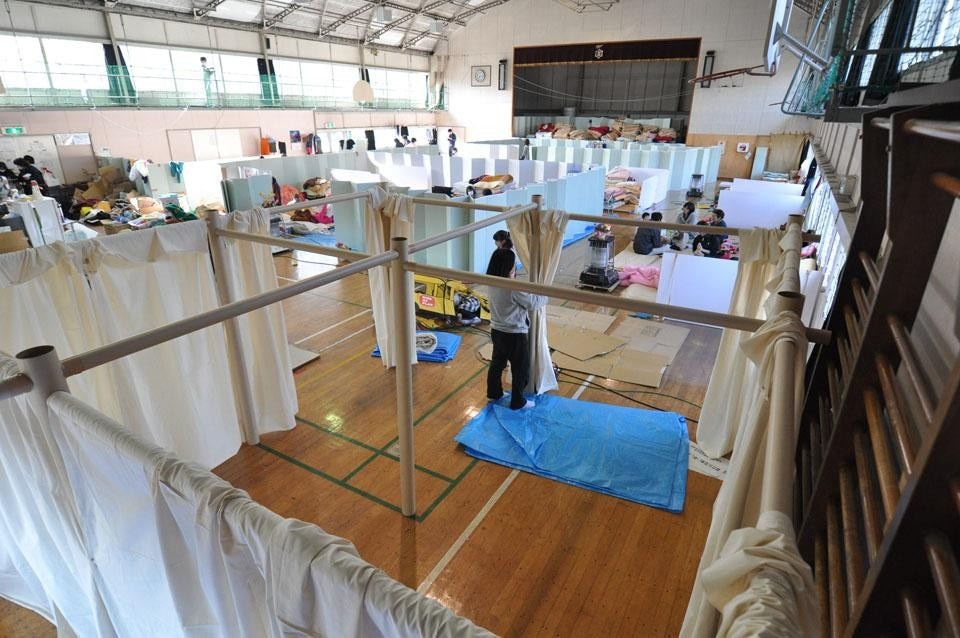
Shigeru Ban: We are accustomed to intervening in emergency situations but March 11 was the worst disaster I've ever seen because the earthquake was compounded by the devastation caused by the tsunamis and by the nuclear crisis.
The devastated area is immense: it reached over 500 km inland from the coast. More than 12,000 people were killed and 18,000 are still missing. The tsunami wiped away everything in its path making it even more difficult to bring aid to the people and organize assistance. Everything is extremely complex, particularly the removal of the debris and the unearthing of the bodies of loved ones. There is great reluctance, for example, to use the bulldozers.
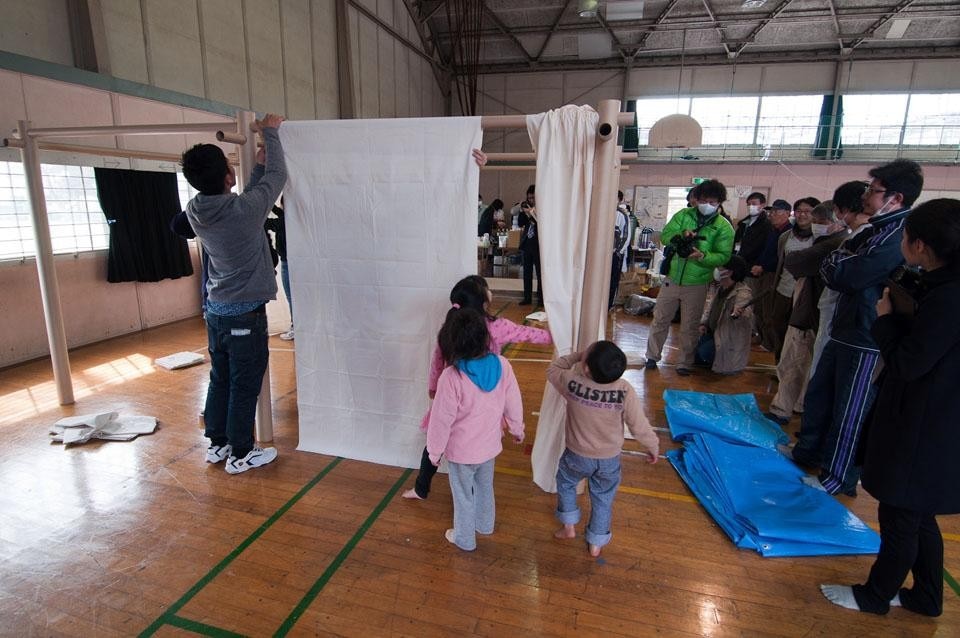
Evacuation centers were set up in the area to accommodate refugees in school gyms or in any other structure available to provide shelter to those who had lost everything. It really is the worst I've ever seen, even compared to disasters in which the number of people affected were much greater but in which the devastation was mainly caused by the earthquake. In Japan, the situation is much more complex ...
We are currently preparing to deploy simple partitions for evacuees taking shelter at gymnasiums in the Tohoku region. From now on, for people taking shelter in these sites, it is necessary to avoid distress from the lack of privacy and high density.
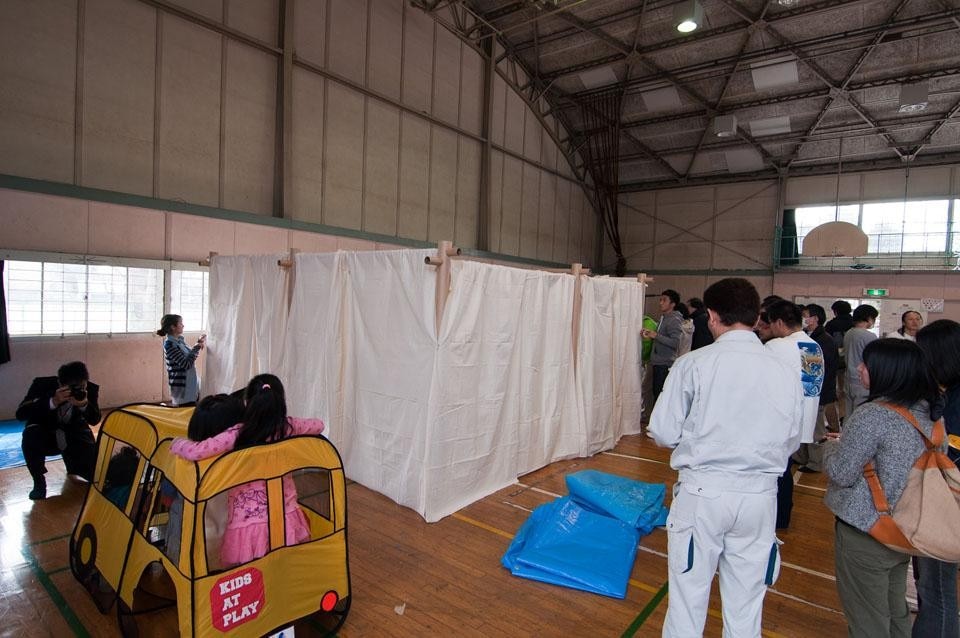
In 1995, I was working in Kobe. At the time, I worked to build temporary homes for Vietnamese refugees. I even built a small public building for them, a church.
At that time I realized that the main problem in the first phase of an emergency evacuation situation is the great density of refugees. Evacuation centers are usually large rooms under a single roof where families find themselves sharing space with strangers. Privacy is a key issue for people who are not accustomed to nurturing close relationships with neighbors in their daily lives, and who have suffered a shock that makes them even more vulnerable.
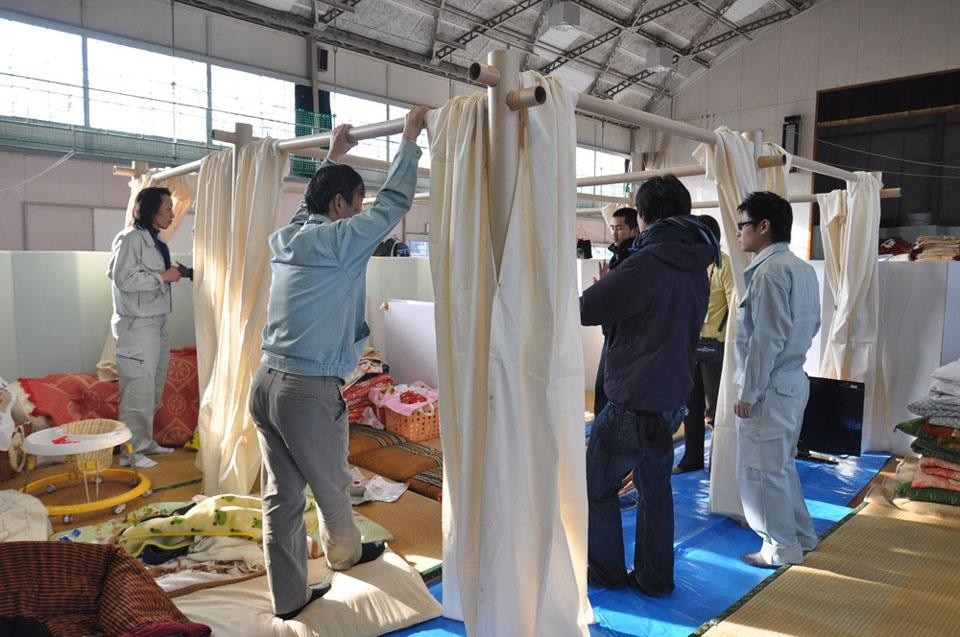
With experience, however, it's become more clear to me about what is really needed in an emergency situation.
In Fukuoka, in 2005, I created a very simple and low cost partition system for the first time. Fukuoka was hit ten years after the Kobe earthquake, and for the first time in a long time, an earthquake hit Japan with an intensity greater than magnitude 6.0 on the Richter scale. We created simple cardboard partition systems that would help define the "territory "between families but which also serve as isolation systems: at night they were used to help people gain some privacy.
The system was very simple and cheap, but it was not enough to provide privacy for families.
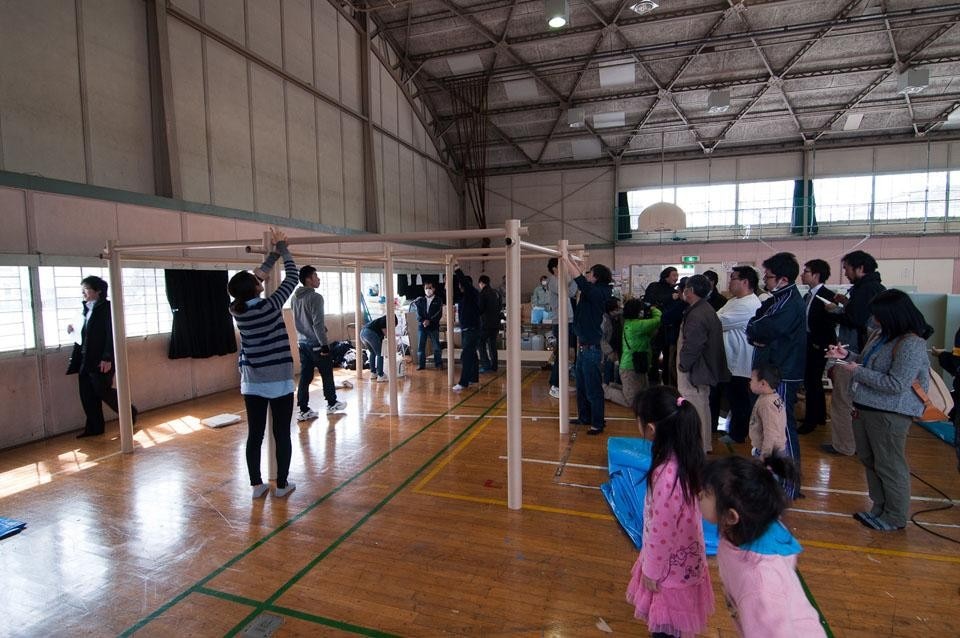
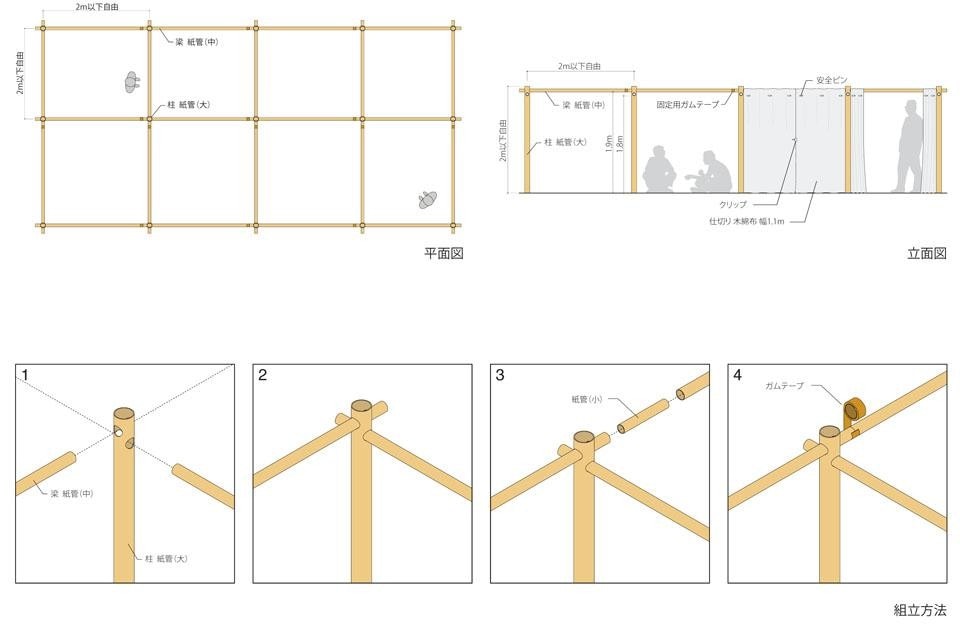
In Haiti, there were no large structures still standing, so it was necessary to provide self-sufficient temporary shelters. This system, however, is designed precisely for the situation that has arisen in Japan in the evacuation centers. It was adopted in many centers in the area affected by the March 11 earthquake and tsunami.
How did you organize production?
Everything is done by students.
The paper manufacturers can be found everywhere. It is very easy to find them. We have an extensive network of suppliers all over Japan; they just need to cut the material to size and drill the holes.
They send the material and we send our team leader who coordinates the local students to complete the installation.
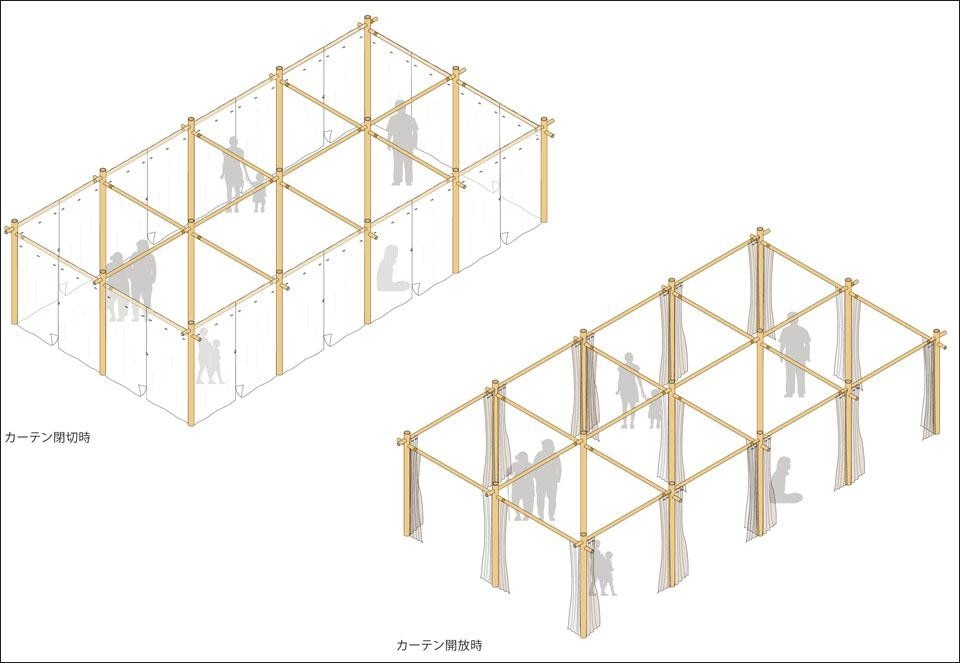
I no longer teach in Japan, but as soon as I organize a project, my former students get together with my office and take steps to intervene quickly. We worked together in China and Haiti...in such first emergency situations first.
We are a good team but at the same time we need the cooperation of local students.
It works this way: our headquarters are in Tokyo, but our team leader moves quickly to get in touch with local schools near the disaster areas and involve the students. I want to emphasize that the students are indeed the heart and engine of reconstruction as well as the hope for the future.
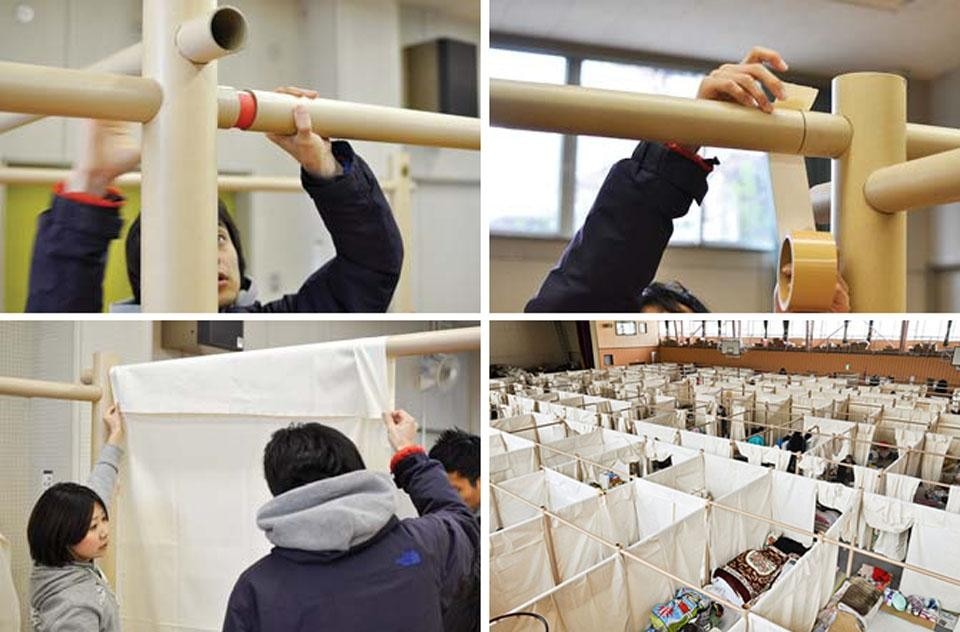
van@shigerubanarchitects.com.
The Bank of Tokyo-Mitsubishi UFJ, Ltd.
Higashi Matsubara Branch
Voluntary Architects Network
3636723 (Futsuu)
BOTKJPJT
5-2-18 Matsubara, Setagaya, Tokyo, Japan

